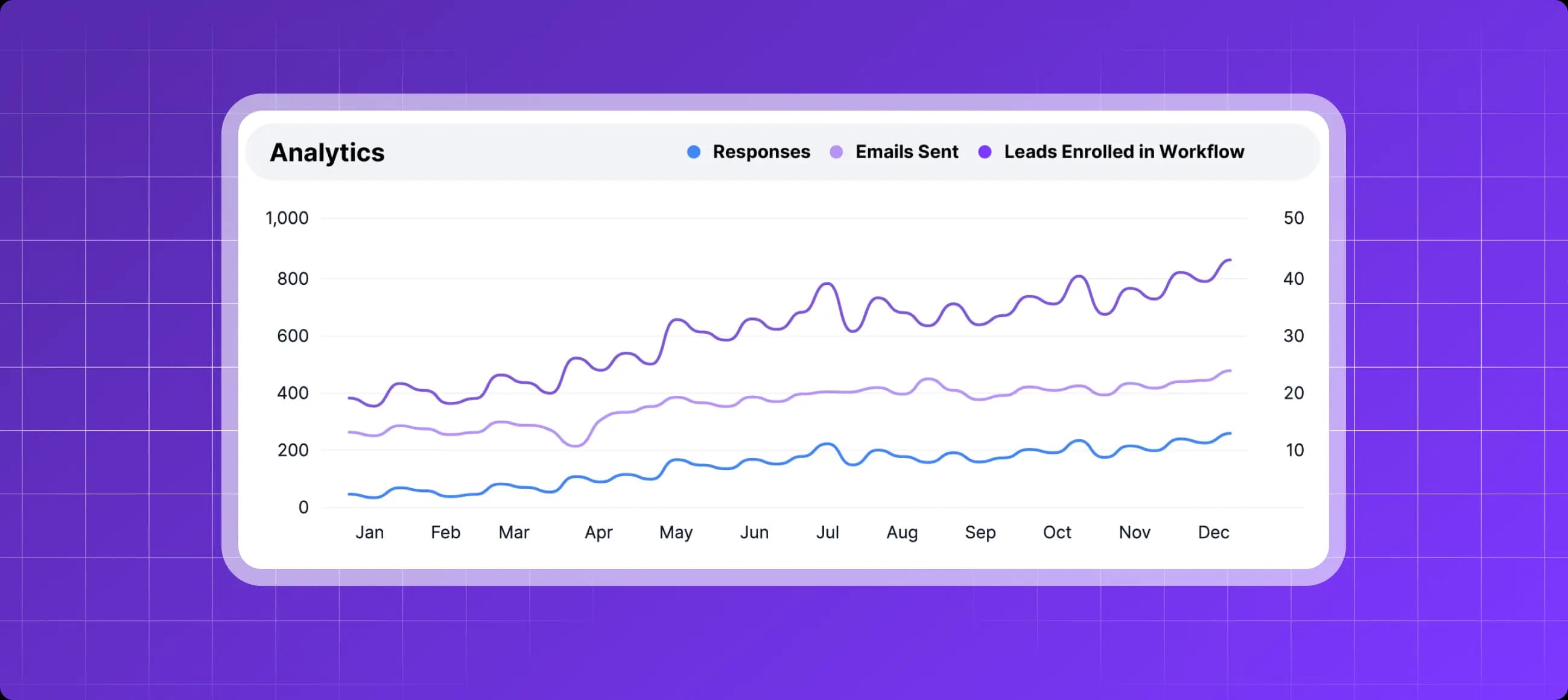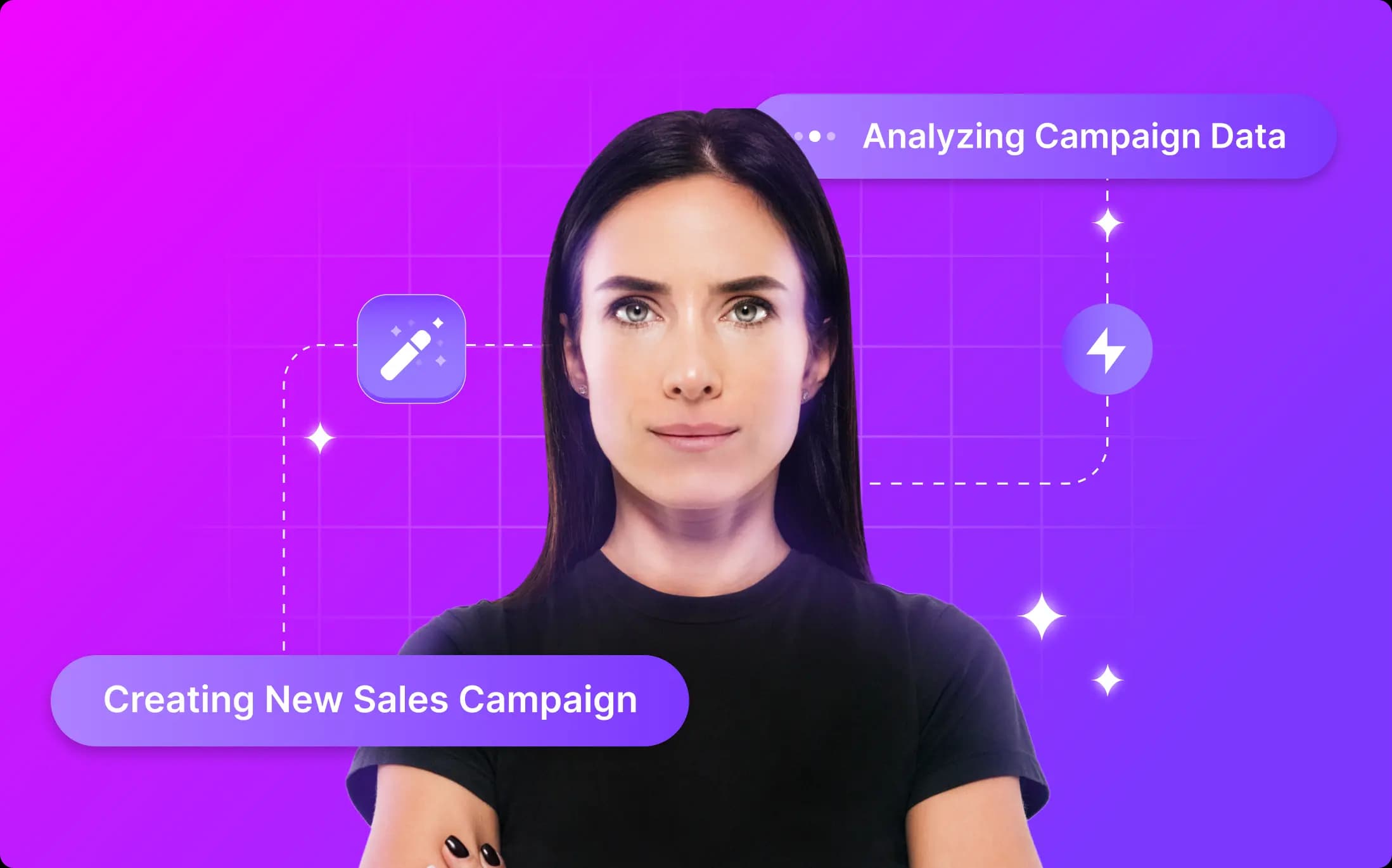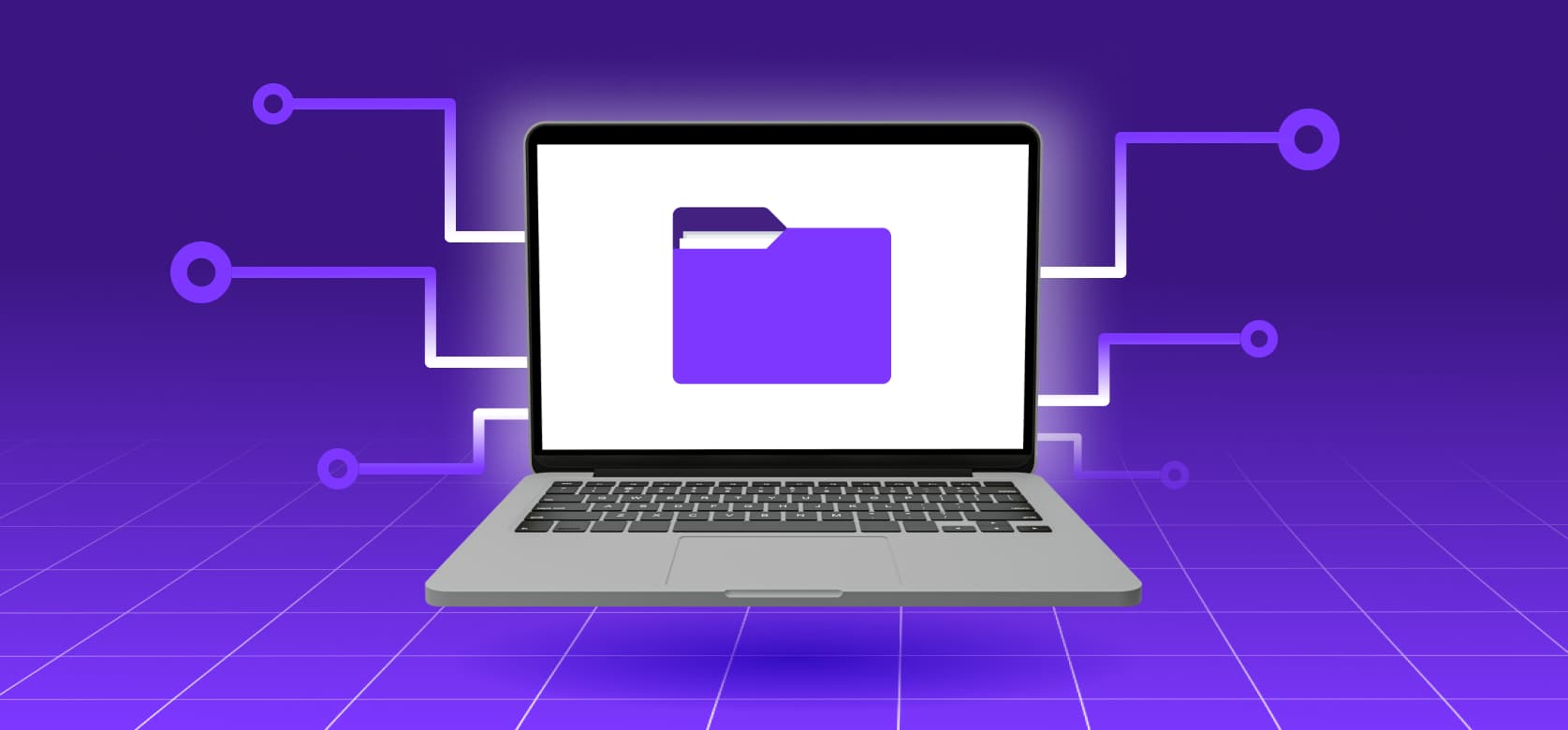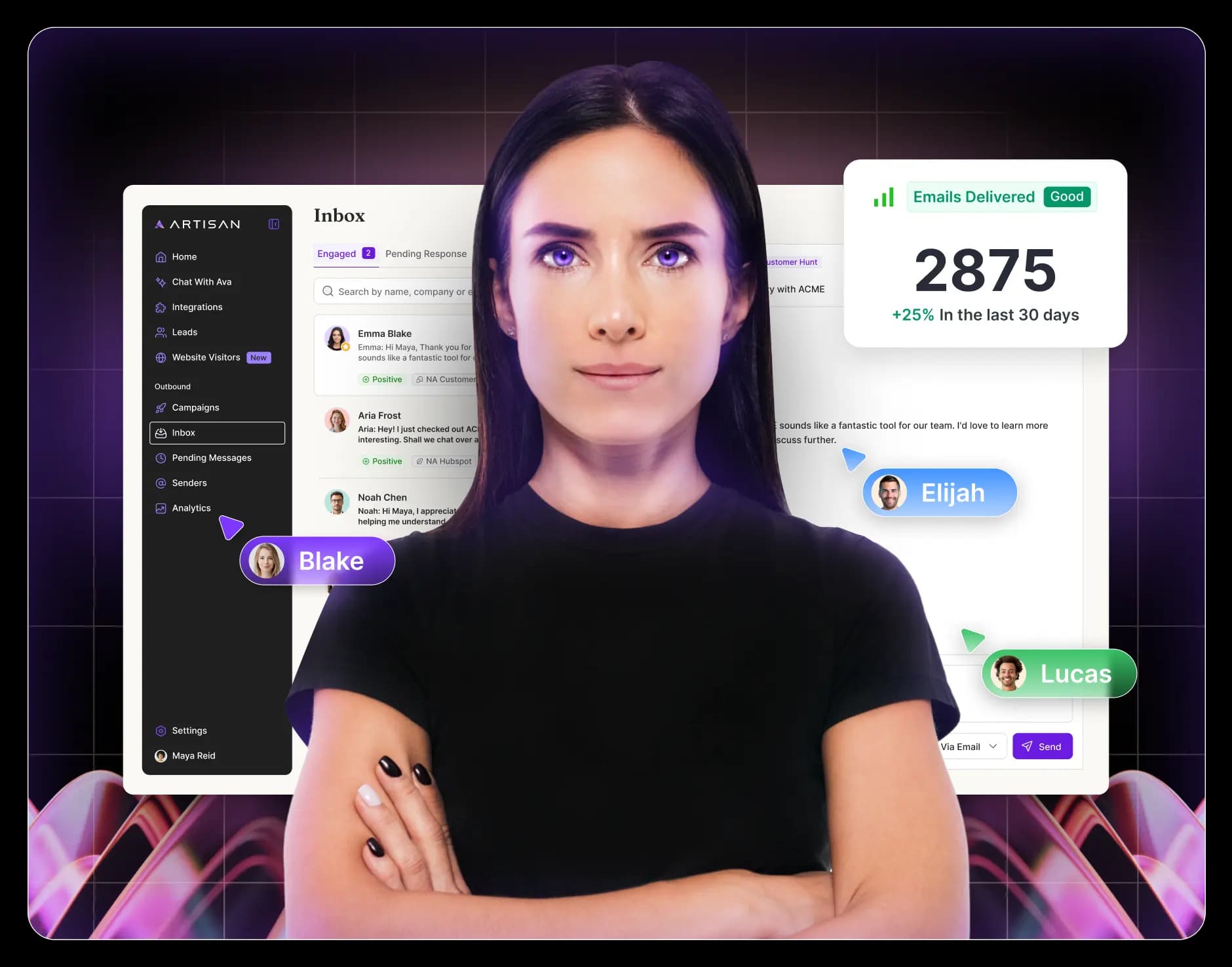When it comes to software, it seems like we’re all moving to SaaS. Dealroom reports that 47% of all venture capital in 2023 was invested in SaaS platforms.
This is because SaaS outsources traditional software's limitations (updating, installation, integration), making adoption more manageable, flexible, and cost-effective.
However, your sales team might need help mapping a new sales process tied to subscription-based software–help outlining a unique value proposition, tracking metrics, or looking for ways to upsell an existing customer base.
This article discusses the four best sales models for B2B SaaS products and how they can help you pivot your sales know-how into one of the biggest markets in tech.
How Is SaaS Sales Different From Traditional Sales Models?
Businesses love SaaS tools because they are easy. Do you want to stay flexible? Cloud tools can help. Want to get an entire team onboarded quickly? SaaS solutions make it easy. Need to get away from downloadables, updates, and patches? SaaS is the way.
These reasons are probably why 99% of companies will use at least one SaaS solution by the end of 2024.
How does SaaS make all of this possible?
They are a move to subscription-based purchases rather than one-time purchases. Rather than licensing and downloads, SaaS solutions rely on monthly or annual payments, providing more opportunities to upgrade or upsell paying customers.
SaaS deployment provides always-on web services via a web browser. This makes software much more accessible (everyone has a web browser) and minimizes the need for users to update or upgrade software constantly.
SaaS includes a maintenance model that outsources critical functions like updates, upgrades, or security and compliance issues to the software provider.
And when the technology changes, sales will follow. Instead of focusing on a one-time transactional sales model, your sales team will look at a shorter sales cycle and a revenue model reflecting earnings over time rather than at the point of sale.
Additionally, new features can translate into new subscription tiers, providing sales teams plenty of opportunities to upsell existing customers.
B2B vs. B2C SaaS Sales
B2B SaaS sales will focus on account-based relationships. Instead of seeking mass licenses from a wide range of customers, you’ll look to sell ongoing packages of services and software that fulfill daily enterprise needs.
It’s not just about enterprise users, however. Many small- and mid-sized businesses (SMBs) need comprehensive packages with the flexibility to adjust pricing tiers and features monthly or annually.
The SaaS Sales Process

There are hundreds of SaaS solutions available for both general consumers and business customers… This market grew to the tune of $101.47B in 2023 and is expected to top $400B in the next decade. That means that there is plenty of room to stake your claim with the right features.
The B2B SaaS sales process is similar to a traditional sales pipeline, albeit considering the unique contours of a SaaS product.
Stage 1: Lead Generation
Lead generation (or lead gen) is critical to the B2B SaaS sales process and extends across several contexts and situations. The full scope of lead gen can include:
Inbound marketing, covering targeted SaaS marketing, SEO content development, webinars, and other indirect approaches that raise your product or brand profile.
Outbound prospecting usually includes email campaigns, social media outreach, and participation in SaaS industry events to connect with potential customers and nurture them through a CRM or Artisan's AI SDR Ava.

In either case, lead generation efforts should align with your existing Ideal Customer Profile (ICP), which should model new customers and those likely to stay with a product for a long-term commitment.
Stage 2: Lead Qualification
Lead qualification is a foundational part of any sales pipeline. Potential leads should be scored and ranked based on their alignment with your ICP and organizational goals, with metrics including behavioral traits, financial or professional situations, or demographics.
One criteria to use in qualifying leads is the Budget, Authority, Need, and Timeline (BANT) approach:
Budget: What is the customer’s budget for a SaaS solution? Is it readily available, and are there any financial constraints?
Authority: Are you engaging with someone who can make purchasing decisions? Are there one or multiple stakeholders in the decision-making process?
Need: What needs does your SaaS solution meet for the customer, and how critical is adoption in terms of time or costs?
Timeline: When will the customer be ready to make a purchase? How long do they have for implementation?
Stage 3: Product Demonstration
Product demos are among the most valuable and practical sales tools available. The SaaStr community reports that the average conversion rate for a product demo is up to 20%—not too bad for a single asset.
However, not all product demos are created equal. A generic demo can bounce a potential lead faster than anything else. Make sure to customize demos to speak directly to important features to customers (or customer segments). Think interactivity and hands-on demonstrations that show rather than tell.
Answer questions about how your product:
Simplifies or streamlines everyday tasks for the customer.
Increases productivity through automation or customization.
Reduces costs by providing better functionality than their existing solution at a lower price point.
Eases use through onboarding and white-glove support.
Often, a demo can include a free or “freemium” version of your SaaS solution that a lead can use on their own time and terms.
Stage 4: Proposal and Negotiation
While submitting a proposal might seem like the final step of the sales process, it is better to see this as the first step in negotiations.
Any reasonable proposal should include some standard information, including:
An outline of the terms of the relationship and the features and capabilities you are delivering to solve specific problems.
Deliverables like access to the product, any white-glove customer support services, credits, and so on.
A timeline for these deliverables, including immediate next steps.
Pricing, payment terms, and deadlines.
Case studies and testimonials that demonstrate costs, ROI, etc.
Once the proposal has been submitted, internal stakeholders will likely have questions about the SaaS solution, such as prices, availability, usefulness, etc. These buyers are making a long-term commitment, and you should be ready and patient with these questions.
Stage 5: Closing Deals
The proposal has been submitted, questions answered, and now both parties have reached what seems like a deal–if you can close it.
You want to “seal the deal” with an agreement at this stage. Everything, including contracts or paperwork, should be worked out. Many modern companies use digital solutions like DocuSign or Dropbox to allow customers to sign documents automatically.
Free or freemium access to your software can create real urgency for your lead to close. If they like it, losing access (or even having limited access) can light a fire under them to close the deal and get their team on the platform.
Stage 6: Onboarding and Implementation
Finally, once the customer is signed on, provide ongoing support. This should include:
Training resources and an easily accessible knowledge base.
On-call support from your customer service staff.
A dedicated contact point for your customers to ensure they can get problems addressed quickly.
IT support to help customers adopt the solution or integrate it with their existing tech stack.
4 Popular B2B SaaS Sales Models for SaaS Companies

Some of the steps previously covered in the sales process are true for both SaaS and traditional tech companies. However, several models you can build into a more extensive sales pipeline can bring you significant success in your target market.
Self-Serve Model
This approach allows potential customers to sign up for your SaaS product without directly interacting with your sales team. On the surface, giving them a way to avoid the sales team seems like a bad idea, but it reduces the friction leads might feel when they wish to learn about a product. This can make trying and purchasing easy–just provide that, and it will lead to some easy-to-understand pricing models and let them create their accounts.
This approach typically includes a freemium model, with a free-to-use tier with limited functionality leading into higher Premium, Business, or Enterprise tiers.
Examples: Dropbox, Slack
Freemium Model with Upsell
A version of the self-service model, offering a freemium with an upsell, allows users to interact with the product but adds urgency to the upsell. This urgency can come from a time-limited access window to limited feature sets.
The upsell will often come from the time or need urgency (sign up for full access) and can include email nurture campaigns and in-app alerts.
Examples: Zoom, Mailchimp, LinkedIn
Usage-Based Model
Some cloud tools track resources with a metered approach. Users can take advantage of some or all of a SaaS solution’s features and pay as they use bandwidth or storage. This can be a great sales incentive for organizations that want to use or build SaaS tools in a cloud infrastructure environment.
Examples: Amazon Web Services (AWS), Digital Ocean
Enterprise Sales Model
We’ve previously given examples of relatively simple SaaS products. The model gets slightly more complex regarding more advanced enterprise SaaS platforms with dozens or hundreds of features. The enterprise model focuses on selling large-scale cloud solutions that involve several layers of proposals, approvals, and customer touchpoints.
This model calls for account representatives with a deep knowledge of their target industry. It may involve several sales process stages, including additional presentations, demonstrations, sample projects, and negotiations.
Examples: Workday, SAP, Salesforce
B2B SaaS Sales Strategy for Success
A B2B sales strategy will depend on how your sales team articulates the value of your SaaS product to decision-makers throughout the process.
Craft a Compelling Value Proposition

Understanding and articulating your value proposition is the key to any successful sales approach. The value proposition tells the customer what you can give them and how it can solve their specific problems.
A good value proposition should include a list of key features and an apparent narrative explaining how those features benefit the customer.
Additionally, your Unique Selling Points (USPs) are just as important as the value proposition. These are how you differentiate your SaaS product from competitors and provide proof of success. For example, you might provide customers with a comparison table highlighting key features against competitors or use customer stories to show leads that the product fits specific niches and use cases.
Finally, use automated personalized outreach via AI SDRs like Ava to bring data to your messaging and help you craft a compelling value proposition.
Artisan's AI SDR Ava automates your outbound lead generation, bringing hot leads to your inbox on autopilot. Try Ava now.
Demonstrate Value Throughout the SaaS Sales Cycle
The sales cycle should include a consistent and ongoing reaffirmation of your product's value. This affirmation should include a broad set of examples of how your product addresses specific needs and pain points.
Some common ways to accomplish this include:
Demos. Targeted, strategic demonstrations of product features can be critical throughout the process. By both providing generalized demonstrations and setting up feature- and industry-specific demos, you can ensure that any stakeholder who needs a reminder of your value has the chance to get one.
Case Studies. Case studies provide critical narratives about your product to your potential leads. These studies show buyers can trust your SaaS solution to fit their needs. Create downloadable PDFs and include them on your website and as part of any email nurture campaigns.
Customer Stories. Customer stories are often less formal than case studies but can provide key social proof that your product solves real problems in real-life situations. Downloadable one-sheet stories can be an easy way to distribute these materials, and video testimonials can add that critical human touch.
Free Trials. Offering a free trial or freemium version of your product lets customers see the value of your product themselves. It also gives your salespeople a “hands-free” way to engage while they focus on follow-ups or upselling.
The Proposal. The proposal gives you space to demonstrate value through some of the techniques we’ve discussed. By including testimonials, customer stories, and use cases alongside demos, you can provide a package that keeps the value of your product front and center, even in the later stages of the sales pipeline.
Track and Analyze Key Metrics for SaaS Business

So, how do you measure success? With traditional software, this poses a more straightforward challenge to sales and revenue. However, with B2B SaaS solutions, these metrics are slightly different.
Conversion rates of leads to customers. It seems obvious enough, but you must understand how many leads are coming through the pipeline. It also helps to understand the sales cycle length and how long it takes to move a lead from first contact to closing the sale.
Monthly Recurring Revenue (MRR) and Annual Recurring Revenue (ARR) measure how sales translate to ongoing subscription revenue.
Customer acquisition costs (CAC) related to sales efforts can tell you the price tag for each customer exactly. This, in turn, can help you better understand how to optimize costs and measure success as acquisition costs against potential monthly revenue.
A high churn rate can be a major revenue problem. Churn and customer retention rates are critical for sales professionals in B2B SaaS because they are responsible for maintaining their customer base and, ideally, upselling them into higher subscription tiers.
Combining user revenue with the average customer lifetime allows you to calculate the Customer Lifetime Value (CLV), which helps with long-term projections regarding your company’s value.
How AI Can Optimize Your B2B SaaS Sales
AI is changing the name of the game in most industries, and B2B SaaS sales aren’t any different. New intelligent automation and creative, generative AI are shaping how and with what quality salespeople can engage with leads throughout their pipeline. These impacts include:
Task automation is based on where a lead is in their journey, any actions they’ve taken, or demographic information.
More effective lead generation and qualification leveraging AI-driven insights.
Creative input on messaging, email nurturing, and personalized engagement with generative AI.

AI integration in SaaS sales goes beyond automation. It's reshaping lead scoring, personalizing outreach, and predicting customer behavior. AI SDRs like Ava can analyze engagement patterns, suggest optimal messaging, and even conduct initial conversations. This allows sales teams to focus on high-value interactions and complex deal-closing activities.
The future of B2B SaaS sales lies in adaptability. As markets evolve, successful teams will blend traditional sales skills with data-driven insights and AI-powered tools. They'll need to stay agile, continuously refine their strategies, and focus on delivering measurable value to customers. By embracing these changes, SaaS companies can build more efficient, effective sales processes that drive sustainable growth in an increasingly competitive landscape.
Streamline your B2B SaaS pipeline with an AI BDR, that automates your outbound lead generation. Learn what Ava can do.

